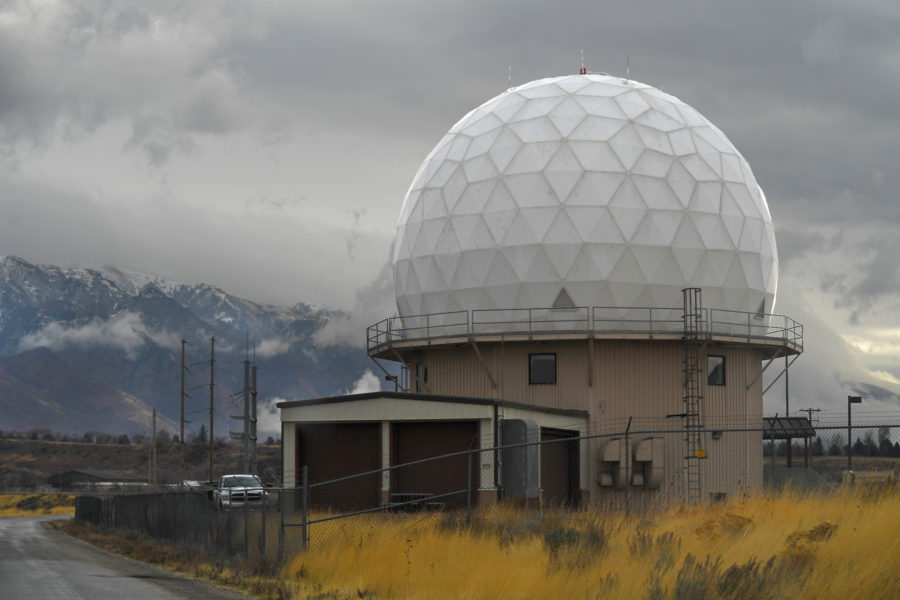The top general in charge of the defense of North America delivered a sobering account of Russian and Chinese threats and described his command’s ability to detect and defend against a cruise missile attack as little more than a “picket fence.”
The U.S. homeland is under the most significant threat since the end of the Cold War, the head of North American Aerospace Defense Command (NORAD) and U.S. Northern Command (NORTHCOM) Air Force Gen. Glen D. VanHerck said Oct. 11.
“For the first time in our nation’s history, [we have] two strategic peers, both nuclear-armed, that we need to deal with,” VanHerck said at the Association of the United States Army conference in Washington, D.C. “While we were focused on violent extremists for last 20-plus years, they were developing capabilities to hold our homeland at risk.”
More concretely, Russia possesses a large arsenal of cruise missiles and platforms to fire them with little warning to the United States.
That is an issue for the North Warning System (NWS), the early-warning radar system the U.S. and Canada use to defend North America. It came online in the late 1980s when Cold War-era intercontinental ballistic missiles and strategic bombers were the primary means of conducting a long-range strike.
“Their cruise missiles that they’ve developed that can be employed from land, air, subsea, sea, are very low radar cross-section now,” VanHerck said. “They make our North Warning System look like a picket fence. It was designed for a 36,000-foot bomber back in the 70s and 80s timeframe, and now they can know where all those radars are and circumnavigate those.”
Russia is currently launching cruise missile attacks on Ukrainian cities. In response to questions from reporters Oct. 11 about pleas for air defense systems by the Ukrainian government, White House National Security Council strategic communications coordinator John Kirby noted that Russia uses long-range cruise missiles fired from bombers flying inside of Russian airspace, making the threat hard to address through air defense systems.
But that threat might exist for the United States as well.
“They can take off over Russian air bases today and launch their cruise missiles from over Russia and attack almost all of North America, including the United States of America,” VanHerck said.
The risk of undetected strikes is increasing from above and below as waters around the U.S. become more permissible due to melting ice caused by climate change. In addition, China and Russia have increased their presence in the Arctic. The White House has recognized its growing importance to national security with a new plan for the region with defense as the top priority, which VanHereck has previously championed.
“It’s the closest route to the homeland if you’re going to attack,” VanHerck said, referring to the route submarines could take over the North Pole, which “significantly reduces our decision space and timeline.”
That threat also exists outside the Arctic due to Russia’s sizeable nuclear-powered submarine fleet.
“That will be a persistent proximate threat capable of carrying a significant number of land attack cruise missiles that can threaten our homeland today,” VanHerck said.
Ultimately, the United States will always attempt to defend its territory. Deterring an attack on America is the main reason the U.S. has spent billions building a nuclear triad.
A July 2022 report by the Center for Strategic and International Studies argued that America lacked sufficient cruise missile defense and relied too much on the U.S. nuclear deterrent, creating “a vulnerability that near-peer adversaries are seeking to exploit.”
In the National Defense Strategy, China is defined as the “pacing” threat and Russia is an “acute” threat. Russia’s invasion of Ukraine was a flagrant example of Moscow’s willingness to take military action to achieve its aims. But Russia has long violated international norms and laws, from using chemical weapons to poison opponents abroad to interfering in other countries’ democratic elections.
While China’s rapidly growing military capabilities and increasingly aggressive international posture concern VanHerck, Russia is front of mind.
“I fought really hard to get the Russians in there candidly,” VanHerck said of the National Defense Strategy. “This was before their acts of Feb. 24” when the invasion of Ukraine began.
“They are a now threat to the homeland,” VanHerck added of Russia, repeating a theme he has tried to hammer home to policymakers. “They are the primary military threat to the homeland today when it comes to kinetic capabilities, and also non-kinetic.”
Russia already took action against the U.S. homeland by interfering in American elections, using various cyber means such as hacking and bots to influence outcomes or at least sow discord. Russia has also been blamed for conducting more aggressive cyber attacks against other countries’ infrastructure, including shutting down power grids.
“We’re under attack, folks, if you haven’t figured that out. What you see in social media—what you see fanned the flames of internal discord, whether it be politics or not,” VanHerck said.
If a nation launches weapons against the United States, conventional or nuclear, VanHerck said global security could quickly spiral out of control if America cannot assess threats quickly and accurately.
“If you can’t detect a threat, I can’t provide continuity of government warning—I can’t provide warning to our nuclear force posture,” VanHerck said. “So you have to start making some assumptions. And those are significant threats, as well.”
“If we’re shooting down cruise missiles over Washington, D.C., or Ottawa, I think I’ve failed,” he added.
